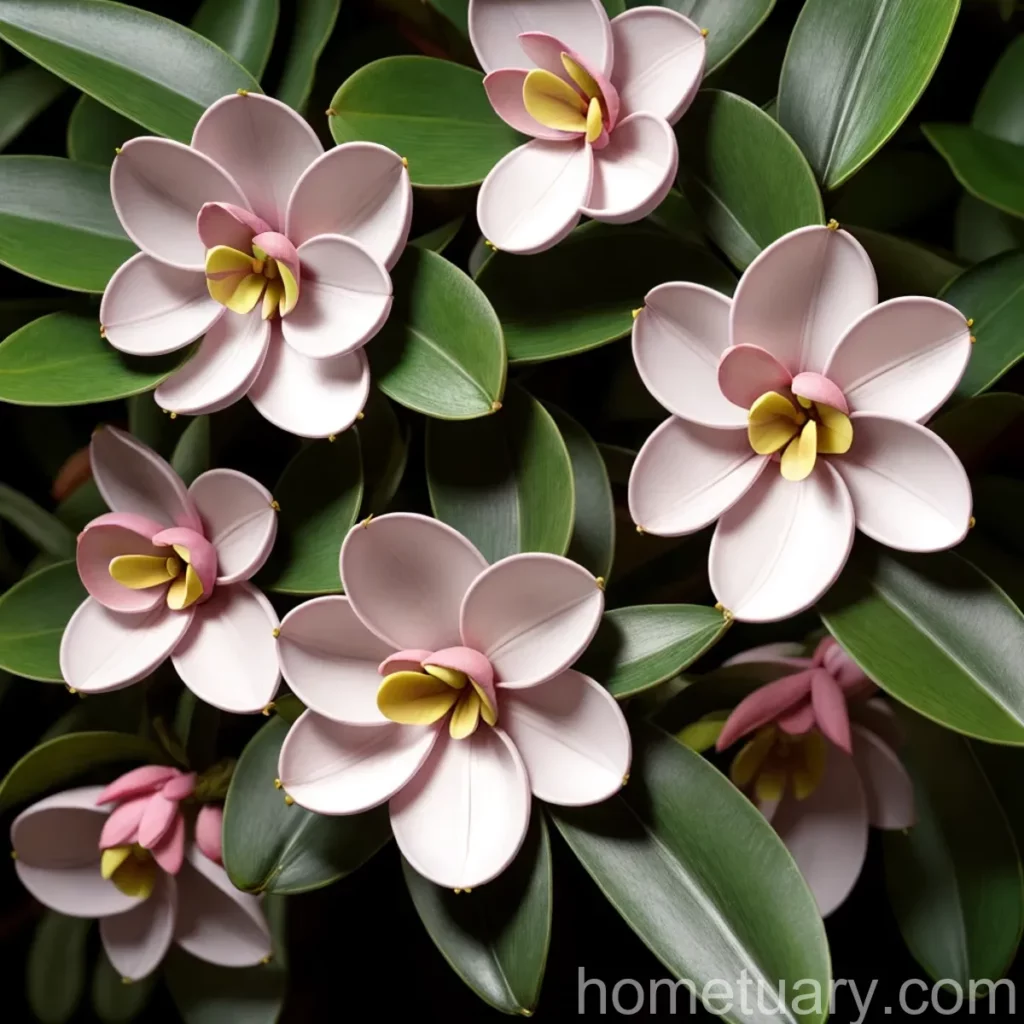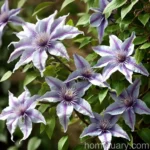Clusia (Clusia orthoneura): A Fascinating Plant for Your Home and Garden
Welcome to an in-depth exploration of the beautiful and versatile Clusia plant, scientifically known as Clusia orthoneura. As a plant scientist, I am thrilled to share insights about this unique species with you.
What is Clusia (Clusia orthoneura)?
Clusia, a genus within the Clusiaceae family, encompasses over 300 diverse species of flowering plants. Among these, Clusia orthoneura stands out for its exceptional ornamental value and myriad uses.
Native to tropical regions of the Americas, Clusia orthoneura is cherished for its aesthetic appeal and resilience. Its captivating features, adaptability, and practical applications make it a favorite among plant enthusiasts and horticulturists.
Key Takeaways – Clusia (Clusia orthoneura)
Before we delve deep into the intricacies of cultivating and caring for Clusia orthoneura, let’s highlight some key takeaways about this remarkable plant:
- Plant Name: Clusia (Clusia orthoneura)
- Family: Clusiaceae
- Genus: Clusia
- Species: Orthoneura
- Native Region: Tropical Americas
- Characteristics: Ornamental, Versatile, Resilient
- Cultivation Preferences: Varying sunlight and water requirements
- Adaptability: Suitable for indoor and outdoor settings
- Uses: Landscaping, Ornamental display, Bonsai, Medicinal properties
Now, let’s explore the essential aspects of cultivating and caring for Clusia orthoneura, covering its culture, uses, water and sunlight requirements, soil preferences, fertilizer needs, pruning techniques, propagation methods, and more.
Culture
Water
Proper watering is critical for the health and vitality of Clusia orthoneura. As with many plants, the key is to strike a balance and avoid extremes. Here are some essential watering tips for Clusia:
- Consistent Moisture: While Clusia appreciates well-draining soil, it thrives when consistently moist. It’s important to avoid waterlogging, which can lead to root rot, but also prevent the soil from drying out completely.
- Observation and Adjustment: Regularly monitor the soil moisture and adjust the watering frequency based on the plant’s specific needs. Factors such as ambient humidity and temperature can influence the plant’s water requirements.
Sunlight
Clusia orthoneura exhibits versatile sunlight preferences, making it adaptable to a range of indoor and outdoor environments. Understanding its sunlight needs is pivotal for its well-being:
- Moderate to Bright Indirect Light: When grown indoors, Clusia flourishes in spaces with ample indirect sunlight. Placing it near a south-facing window or in a spot with filtered light can ensure optimal growth.
- Shade Tolerance: Clusia also demonstrates a remarkable tolerance for shaded areas, making it suitable for landscaping in settings with varying light conditions.
Uses
Ornamental Display
Clusia orthoneura’s lush, glossy foliage, and its unique growth habit make it an exceptional choice for ornamental display. Its broad, paddle-shaped leaves and resilience to fluctuating environmental conditions contribute to its popularity in landscaping and indoor decor.
Bonsai Cultivation
With its resilient nature and adaptability to pruning, Clusia orthoneura lends itself well to bonsai cultivation. The species’ ability to develop aerial roots adds an intriguing dimension to its bonsai form, making it an engaging choice for bonsai enthusiasts.
Medicinal Properties
Beyond its aesthetic appeal, certain species within the Clusia genus, such as Clusia rosea, have been recognized for their potential medicinal properties. Traditional practices in certain cultures have utilized Clusia plants for various health-related applications, underscoring their significance beyond ornamental use.
Fertilizer
Soil
Clusia orthoneura thrives in well-draining, nutrient-rich soil. Here are some considerations for choosing the ideal soil for your Clusia plant:
- Loamy and Well-Draining: A mix of loam, peat, and sand provides the ideal balance of moisture retention and drainage for Clusia orthoneura.
- Nutrient-Rich Substrate: Incorporating organic matter, such as compost or well-rotted manure, into the soil can enhance its fertility and provide essential nutrients for the plant’s growth.
Fertilization
Applying a balanced, slow-release fertilizer during the growing season can support the healthy development of Clusia orthoneura. Opt for a fertilizer with a balanced NPK ratio, supplemented with micronutrients to promote vigorous growth and vibrant foliage.
Pruning
Clusia orthoneura’s growth habit, characterized by its ability to form aerial roots and dense foliage, benefits from periodic pruning. Here’s how to approach pruning for a well-maintained Clusia plant:
- Shape and Size Control: Regular pruning helps manage the plant’s size and shape, making it suitable for indoor and outdoor display. Trimming back excessive growth also encourages a more compact and bushy appearance.
- Aerial Root Management: If the plant develops aerial roots, you can selectively prune them to maintain the desired aesthetic and structural form.
- Pruning Tools: Ensure that pruning tools are clean and sharp to make precise cuts without causing unnecessary stress to the plant.
Propagation
Clusia orthoneura offers multiple propagation methods, including stem cuttings, air layering, and seed propagation. Each technique has its specific requirements and advantages:
- Stem Cuttings: Take stem cuttings from healthy, mature stems and place them in a propagation medium. With adequate moisture and warmth, the cuttings can develop roots and establish as new plants.
- Air Layering: This method involves creating a wound on a healthy stem, enclosing it with a rooting medium, and allowing roots to form before detaching the new plant from the parent.
- Seed Propagation: While less commonly employed, seed propagation can be an intriguing method for expanding Clusia orthoneura populations. It requires careful attention to seed viability and suitable germination conditions.
Container Popularity
The versatility and adaptability of Clusia orthoneura make it a popular choice for container cultivation. Its lush foliage, resilience, and suitability for both indoor and outdoor settings contribute to its widespread use in containers and landscaping.
Common Diseases
Disease Diagnosis
While Clusia orthoneura is known for its hardiness, it can still be susceptible to certain diseases and stresses. Keeping an eye out for symptoms and addressing issues promptly is crucial for maintaining the plant’s health:
- Leaf Spot: Fungal infections can manifest as dark spots or lesions on the plant’s leaves. Proper airflow, moderate watering, and avoiding overhead irrigation can mitigate the risk of leaf spot diseases.
- Root Rot: Overly wet conditions or poorly draining soil can lead to root rot, causing the plant’s roots to decay. Adjusting the watering regimen and ensuring proper drainage can prevent this destructive condition.
- Pest-Induced Stress: Prolonged pest infestations can put stress on the plant, making it more susceptible to other diseases. Regular inspection and pest control measures can mitigate these risks.
Common Pests
Clusia orthoneura’s robust nature typically helps it withstand pest pressures, but certain insects can still pose challenges. Vigilance and appropriate pest management strategies are essential for keeping the plant healthy:
- Scale Insects: These small, immobile insects can gather on the plant’s stems and leaves, feeding on its sap. Physical removal or targeted insecticidal treatments can help control scale infestations.
- Mealybugs: Mealybugs are soft-bodied insects that can cluster on the plant, particularly in leaf axils and crevices. Natural predators, such as ladybugs, and horticultural oils can aid in managing mealybug populations.
Botanist’s Tips
Fun Facts
Unveiling the captivating aspects of Clusia orthoneura can deepen your appreciation for this remarkable plant. Here are some intriguing fun facts about Clusia:
- Air Purity Champion: Clusia orthoneura contributes to indoor air quality by effectively filtering and purifying the air, enhancing the overall health of its surroundings.
- Versatile Landscape Element: Beyond its potted display, Clusia serves as an excellent landscaping element, providing privacy screens, hedges, and vibrant focal points in outdoor settings.
Links to External Resources
To further enrich your understanding of Clusia orthoneura and its cultivation, here are some valuable external resources:
- The American Clusiaceae Society: An authoritative source for Clusiaceae-related information, research, and conservation efforts.
- Botanical Gardens and Arboreta: Explore botanical gardens and arboreta with diverse Clusia collections, offering insights into the plant’s natural habitats and cultural significance.
In this comprehensive guide, we’ve dissected the intricacies of cultivating and caring for the captivating Clusia orthoneura. From its water and sunlight requirements to its ornamental, bonsai, and medicinal uses, Clusia’s multifaceted nature makes it a compelling addition to any home or garden.
By employing botanical wisdom and horticultural best practices, you can ensure the thriving growth and long-lasting beauty of your Clusia plant, fostering an enriching connection with nature and the remarkable world of plants.
With its resilience, charm, and practical benefits, Clusia orthoneura remains a botanical marvel that transcends mere ornamentation, embodying the profound synergy between humanity and the natural world. Whether adorning your living space or enhancing your outdoor oasis, the allure of Clusia continues to captivate plant enthusiasts and gardening aficionados around the globe.















